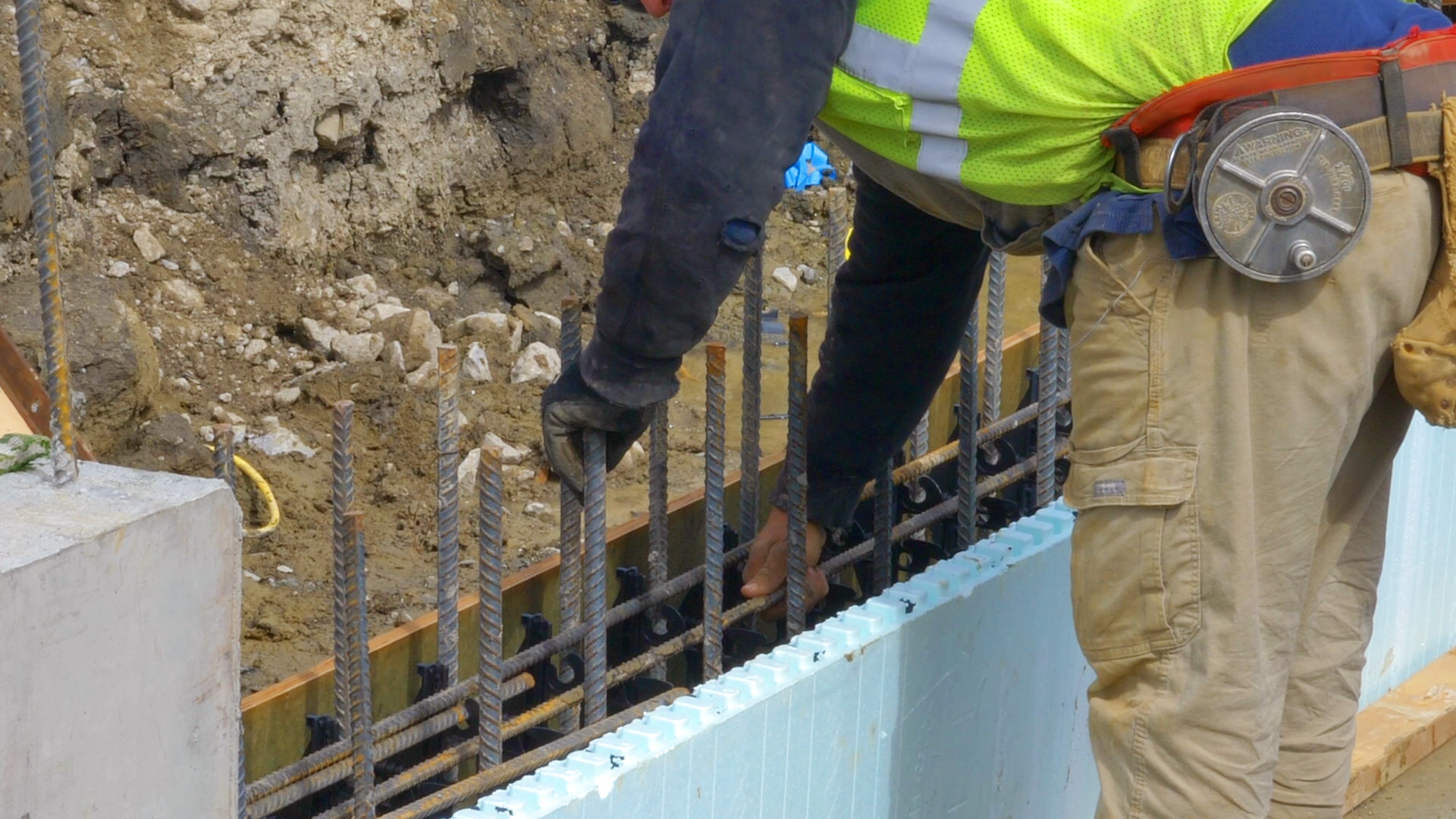
- Products
- Why Nudura
- Nudura Project Applications
- Training Academy
- Resources
- Company
One main reason why ICF has become popular among builders is that there is minimal learning curve. Professional contractors can take our in-person or online ICF training course to quickly understand how to install ICF systems. Combined with support from our distributors and your local Nudura rep, builders can take the leap into insulated concrete form construction and feel confident that they can successfully manage any job from start to finish.
Here are 5 other reasons you should complete an ICF training.
We find there is a common misconception about the complexity of ICF construction, with an understanding of straight, plumb and level, it’s pretty simple. Once the light-weight insulated concrete forms are linked together horizontally, steel rods are set parallel into the hollow cavity to provide the strength for the wall. 
After the forms are stacked to their final height, vertical steel is inserted at regular intervals and concrete is poured in from the top of the wall using a concrete boom pump.
Drywall is very easily attached to the EPS foam using standard coarse head #6 drywall screws – the same way they would be attached to stud wall in a framed wall construction. Each of the ties that cross across the cavity are fitted with a 1.5-inch wide fastening flange. The screws can be mounted directly into the flanges, which have been tested to ensure the screw does not pull out of web fastening strips in the foam. On the outside face of the foam, Nudura forms feature a diamond pattern that clearly indicates where screws are applied to anchor into the wall itself.
Electrical, HVAC and plumbing can also be easy accomplished with ICFs as outlined in this blog post. And lastly, when construction is complete, virtually any exterior finish can be installed to the outside for a beautiful façade.

CONTACT US
We’re committed to supporting homeowners and design professionals who are interested in or use our products. We’re always happy to help and provide more information.




